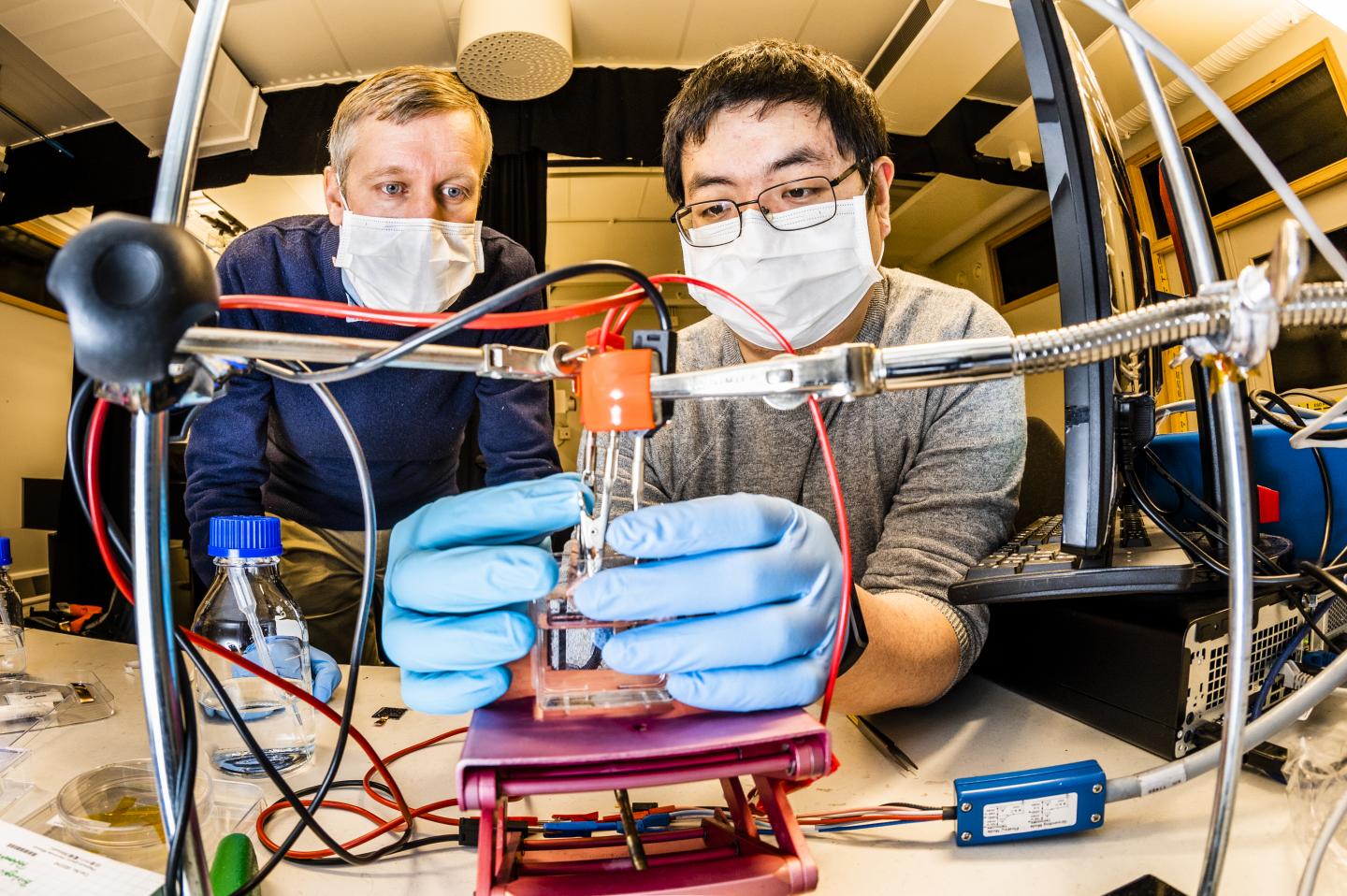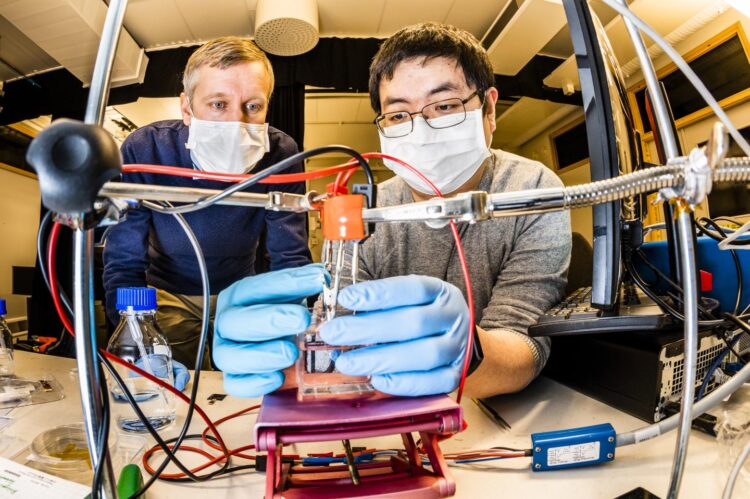Tunable structural color images by UV-patterned conducting polymer nanofilms on metal surfaces

Credit: Thor Balkhed
Researchers at Linköping University have developed a method that may lead to new types of displays based on structural colours. The discovery opens the way to cheap and energy-efficient colour displays and electronic labels. The study has been published in the scientific journal Advanced Materials.
We usually think of colours as created by pigments, which absorb light at certain wavelengths such that we perceive colour from other wavelengths that are scattered and reach our eyes. That’s why leaves, for example, are green and tomatoes red. But colours can be created in other ways, and some materials appear coloured due to their structure. Structural colours can arise when light is internally reflected inside the material on a scale of nanometres. This is usually referred to as interference effects. An example found in nature are peacock feathers, which are fundamentally brown but acquire their characteristic blue-green sheen from small structural features.
Researchers at Linköping University have developed a new and simple method to create structural colours for use with reflective colour displays. The new method may enable manufacturing of thin and lightweight displays with high energy-efficiency for a broad range of applications.
Reflective colour displays differ from the colour displays we see in everyday life on devices such as mobile phones and computers. The latter consist of small light-emitting diodes of red, green and blue positioned close to each other such that they together create white light. The colour of each light-emitting diode depends on the molecules from which it is built, or in other words, its pigment. However, it is relatively expensive to manufacture light-emitting diodes, and the global use of emissive displays consumes a lot of energy. Another type of display, reflective displays, is therefore being explored for purposes such as tablet computers used as e-readers, and electronic labels. Reflective displays form images by controlling how incident light from the surroundings is reflected, which means that they do not need their own source of illumination. However, most reflective displays are intrinsically monochrome, and attempts to create colour versions have been rather complicated and have sometimes given poor results.
Shangzhi Chen is a newly promoted doctor at the Laboratory of Organic Electronics at Linköping University and principal author of an article that describes a new type of dynamic structural colour image, published in the scientific journal Advanced Materials.
“We have developed a simple method to produce structural colour images with electrically conducting plastics, or conducting polymers. The polymer is applied at nanoscale thicknesses onto a mirror by a technique known as vapour phase polymerisation, after the substrate has been illuminated with UV light. The stronger the UV illumination, the thicker the polymer film, and this allows us to control the structural colours that appear at different locations on the substrate”, says Shangzhi Chen.
The method can produce all colours in the visible spectrum. Furthermore, the colours can be subsequently adjusted using electrochemical variation of the redox state of the polymer. This function has been popular for monochrome reflective displays, and the new study shows that the same materials can provide dynamic images in colour using optical interference effects combined with spatial control of nanoscale thicknesses. Magnus Jonsson, associate professor at the Laboratory of Organic Electronics at Linköping University, believes that the method has great potential, for example, for applications such as electronic labels in colour. Further research may also allow more advanced displays to be manufactured.
“We receive increasing amounts of information via digital displays, and if we can contribute to more people gaining access to information through cheap and energy-efficient displays, that would be a major benefit. But much research remains to be done, and new projects are already under way”, says Magnus Jonsson.
###
The research has been financed by the Swedish Foundation for Strategic Research, the Knut and Alice Wallenberg Foundation, the Swedish Research Council, the Wenner Gren Foundations, and the Strategic Initiative in Advanced Functional Materials, AFM, at Linköping University.
The article: Tunable structural color images by UV-patterned conducting polymer nanofilms on metal surfaces Shangzhi Chen, Stefano Rossi, Ravi Shanker, Giancarlo Cincotti, Sampath Gamage, Philipp Ku?hne, Vallery Stanishev, Isak Engquist, Magnus Berggren, Jesper Edberg, Vanya Darakchieva, Magnus P. Jonsson Advanced Materials 2021 doi: 10.1002/adma.202102451
Media Contact
Magnus Jonsson
[email protected]
Related Journal Article
http://dx.





